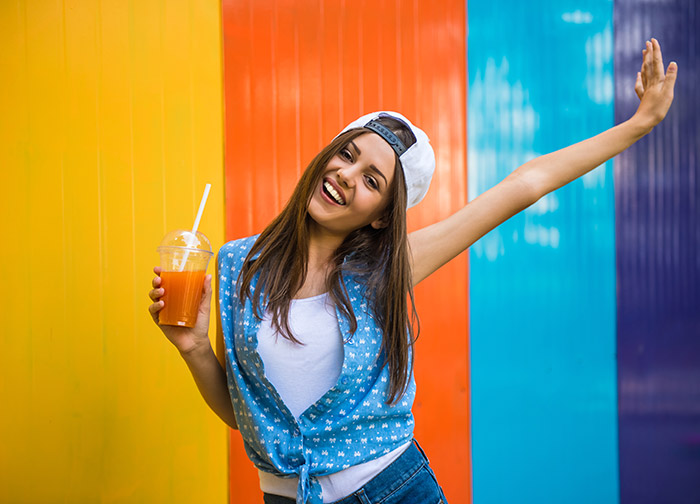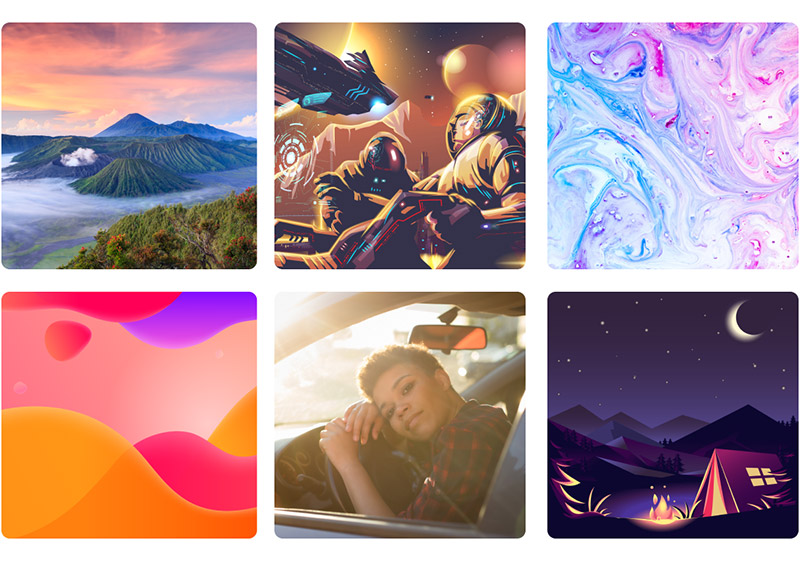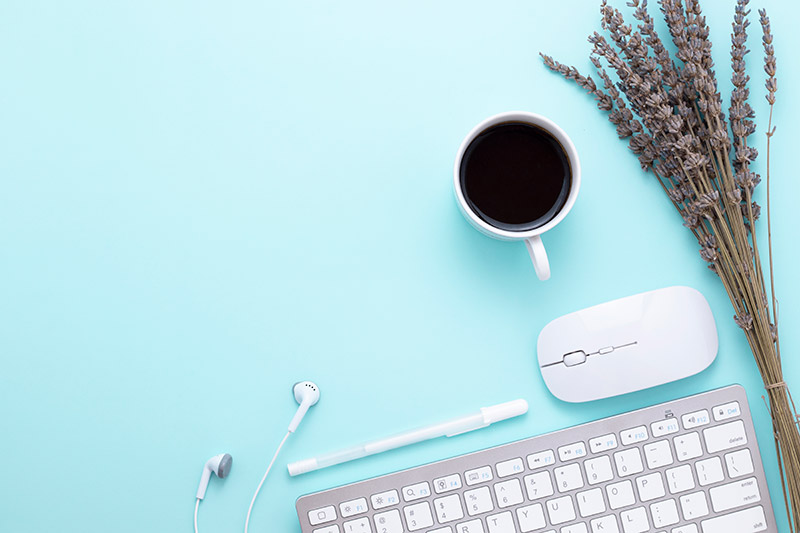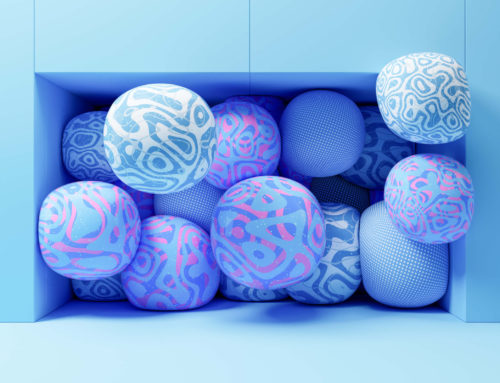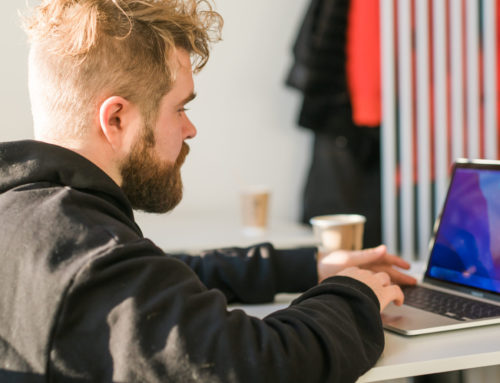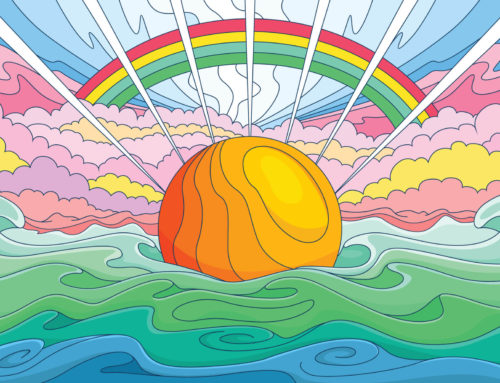Photos are a crucial element in graphic design projects from websites to brochures to advertisements. The stock photos you use can make or break your design, so selecting the right images is a critical part of the design process.
Finding the perfect image to communicate your message involves more than simply looking for a high-quality photo. You’ll need to think about the size, composition, and content of the image as it relates to the deliverable you’re working on.
Where and How Will It Be Used?
Different types of projects have unique requirements and considerations. With that in mind, let’s take a look at some of the typical projects you might be working on.
Images for Social Media
Over the past several years, social media platforms have become increasingly visual. Today, the effective use of photos and images is essential for achieving success with social media marketing. While the specific needs will vary depending on the social networks you’re using, there are a few constants that apply regardless of the platform.
- Colorful – Bright photos and images shared on social media effectively capture viewers’ attention while scanning or scrolling through their feed. You might choose a picture because its vibrant colors will catch the eye of viewers.
- Includes People – In general, photos of people and faces tend to be effective for social media. These photos feel more personal and are effective at drawing viewers in.
- Horizontal or Vertical – The ideal dimensions for photos and images can vary from one platform to the next. In some cases, horizontal (landscape) photos will work best, and in other cases, a vertical (portrait) photograph may be more appropriate. Be sure to consider the ideal orientation and dimensions for the platform you’ll be using, and choose an image accordingly.
Recommended Dimensions for Instagram
You have options with the photos and images you use on Instagram.
- Square Post Images – 1080px by 1080px
- Horizontal Post Images – 1080px by 560px
- Vertical Post Images – 1080px by 1350px
- Story Images – 1080px by 1920px
Recommended Dimensions for Facebook
Get millions of stock images and videos at the best price
Unlimited access. No attribution required. Starts at just $9/month.
The ideal dimensions of photos posted to the Facebook timeline are 1200px by 630px. Facebook automatically resizes the image, but using these dimensions helps to ensure there is no cropping and the image is large enough.
Recommended Dimensions for Pinterest
Pinterest recommends dimensions of 1000px by 1500px for your pins. If you want the photo to take up the entire background of the pin design, be sure to go with a vertical photo.
Recommended Dimensions for Twitter
The ideal dimensions for images shared on Twitter are 1600px by 900 pixels.
Images for Ads
Are you looking for photos to use as part of an online advertisement? Images are vital for ads on platforms like Facebook and Pinterest. Here are some details to keep in mind:
- Eye-Catching – One of the most important jobs of the ad’s image is to capture viewers’ attention. If visitors don’t notice or pay attention to the ad, they certainly won’t click. This is especially true for ads on social platforms since users tend to scroll quickly and ignore things that don’t stand out. Be sure your image uses bright colors that don’t blend in with the color scheme of the platform. Some of the most effective ads use funny or odd images to grab attention, but this may not be the right fit for every brand or campaign.
- Faces – While it’s not always the case, many successful ads include photos of people, especially faces. Pictures of happy people tend to draw more interest and lead to more clicks.
- Relevant to Your Target Audience – The photos in your ads should resonate with the people you’re trying to reach. You need to understand your customers and what appeals to them.
Images for Marketing Materials
The photos and images used in marketing materials like brochures, flyers, and websites significantly impact your brand image. Think about the image of your company or the image you want to establish. Is the photo aligned with that brand image?
For example, if your company has a casual tone, you wouldn’t choose a photo of a man in a business suit. The images you use in a design will communicate a message to viewers, and that message should be consistent with the other branding, not contradict it.
The colors of the photo should also work well with the color scheme of the design. If you’re designing a brochure, consider how the picture will look within the overall color scheme of the brochure and your brand colors.
Images for Blog Posts
Photos can be used in many different ways within blog posts and for various purposes, but there are a few specific details to keep in mind.
- Horizontal – Most images used within blog posts, especially lead images at the top of the article, will be horizontal rather than vertical. Of course, that doesn’t mean you can never use vertical photos in blog posts.
- Room for Text – In some cases, you may be adding text on top of the image. If that’s the case, look for photos that have room for text so it can be easily read.
- Compelling – Photos are added to blog posts to break up the text and create more visual interest. The photos should be exciting and encourage visitors to keep scrolling and reading rather than clicking away out of boredom. Try to avoid images that look like every other stock photo, which readers have probably seen many times.
The usage may dictate the visual you need. For example, the photo below includes plenty of open space for text. You can add text to the top left part of the image and it will be easy to read, thanks to the clean background.
Is the Photo Genuine and Authentic?
The most compelling photos will feel genuine and authentic, as opposed to forced or posed. When you’re looking for pictures, lean towards images that look like they were custom created rather than those that look like stock photos you’ve seen hundreds of times. If you simply grab the first stock photo you come across, your project may look like many others that have used similar images.
You don’t need to hire a photographer to take pictures specifically for your project if you’re making an effort to select genuine and authentic images.
Related: 6 Ways to Take Great Lifestyle Photos on a Budget
Conclusion
If you want to maximize the effectiveness of your design, you’ll need to choose the right photos for the project. By following the tips covered here, you can select images that work well with your design to communicate the intended message.
Here at Vecteezy, we offer a massive selection of photos you can download and use. Search for the picture you need or browse photos in several different categories.
Lead image by oinegue.


